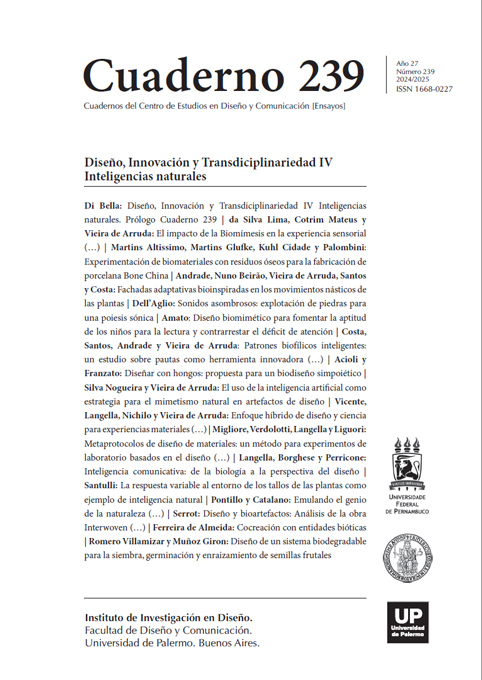Design and science hybrid approach for material experiences: reinterpreting Napolitan tuf
Résumé
The paper proposes the story of an experience of research and experimentation in the field of upcycling the tuff, a natural and iconic material for the city of Naples, demonstrating how the intelligence of nature understood as an integrated system of porosity, ribbing, stratifications, colors can be used by design as a vehicle to communicate the identity of a place and its history.
Références
Bak-Andersen, M. (2018). When matter leads to form: Material driven design for sustainability. Temes de disseny, (34), 10-33. doi:10.46467/TdD34.2018.10-33.
Centre4NI, (2022). Book https://www.naturalintelligence.info/
Barad, K. (2007). Meeting the universe halfway: Quantum physics and the entanglement of
matter and meaning. duke university Press.
Benjamin W., Lacis A. (1925). Neapel, Frankfurter Zeitung.
Greco, E. & Giampaola, D. (2022). Napoli prima di Napoli. Mito e fondazioni della città di
Partenope, Salerno Editrice.
Haug, A. (2019). Acquiring materials knowledge in design education. International Journal
of Technology and Design Education, 29(2), 405-420. https://doi.org/10.1007/s10798-018-9445-4
Harvey, R. (2000). Sensation and perception (5th ed.). New York: John Wiley & Sons
Hasling, K. M. (2018). Perspectives on the role of materials in sustainable product design
education. Temes de disseny, (34), 104-115. https://doi.org/10.46467/TdD34.2018.104-115.
Los autores/as que publiquen en esta revista ceden los derechos de autor y de publicación a "Cuadernos del Centro de Estudios de Diseño y Comunicación", Aceptando el registro de su trabajo bajo una licencia de atribución de Creative Commons, que permite a terceros utilizar lo publicado siempre que de el crédito pertinente a los autores y a esta revista.


